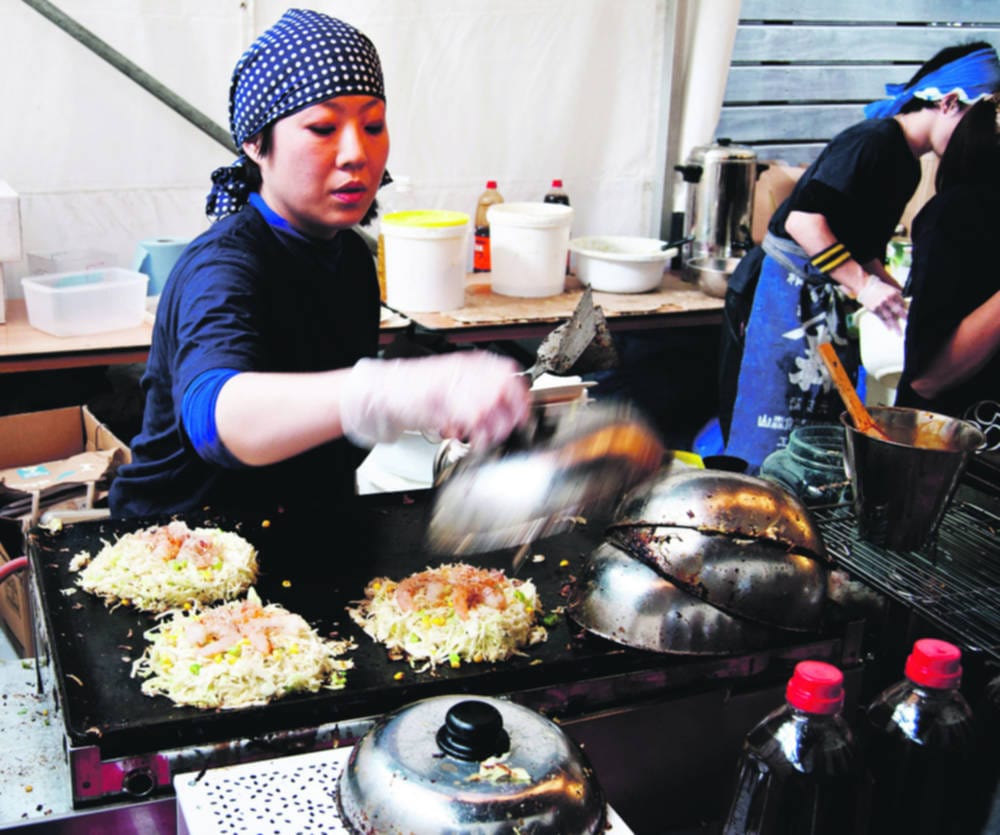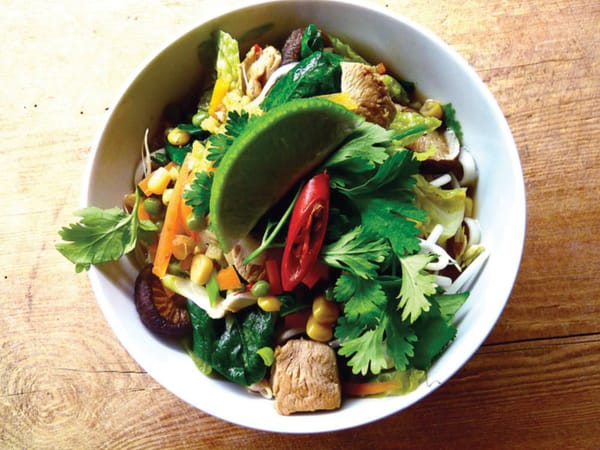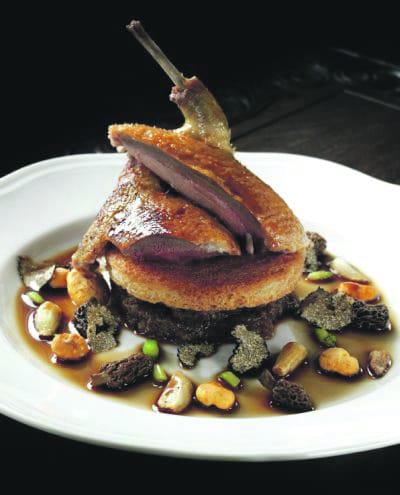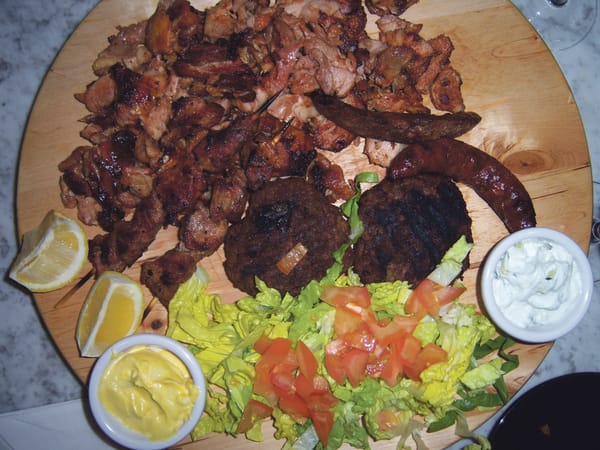Exploring the alternative of Japan
An expat’s secret food indulgences unveiled courtesy of Aki Matsushima

We’re all familiar with sushi and tempura, courtesy of Yo! Sushi, but there’s a whole lot more that Japanese cuisine has to offer and is awaiting diners like you to take the first step to explore. Here’s some fresh ideas you might want to try out :
Yakitori
One of the small pleasures in life for a busy Tokyo office worker might be visiting a cramped, smoke-filled yakitori joint at the end of a tiresome day. The chef wears traditional attire and grills skewers of chicken over charcoal, crackling in its own fat and juices. The skewers are then devoured with a much-awaited glass of ice-cold Japanese lager. In true South-East Asian spirit, all parts of the chicken including the heart, gizzards, intestine and skin are put on the grill alongside the more familiar cuts. Everything is cooked in the same, simple manner – seasoned with salt or a soy sauce marinade then barbequed over charcoal to bring out their sublime, varied flavours. You can experience these very flavours yourself, albeit in a more spacious, clean and slick setting. Tosa in Hammersmith is one of few London-based yakitori restaurants.
Ramen Noodles
Ramen is the Japanese answer to post-drinking junk food. Therefore Japanese expats are puzzled by the 250 calorie healthy chicken miso ramen lunch pots sold for £3 at Waitrose and M&S. Real ramen noodles come in soup that is more oil and lard than stock, contains a few times more salt than your RDA and is gooey with the pork gelatine that’s boiled out of its bones and skin. It can be topped with stewed, fat belly pork. The noodles themselves are mainly flour with some egg, made very thin and dry to soak up as much of the grease as possible. Nagomi is a cute little restaurant off Oxford Street that replicates tonkotsu ramen (literally meaning ‘pork bone ramen’) vaguely accurately. Although, considering that you’re going to be drunk anyway, I don’t think instant tonkotsu ramen sold at Japanese food shops are a bad substitute.
Udon Noodles
Contrary to ramen, udon noodles are very healthy noodles. The thick, white, slippery noodles are made of flour and water then served with a piquant dashi stock-based soup or dipping sauce. The elasticity of the udon is very important, and the traditional way of kneading it is by foot. Koya in Soho might just be the only restaurant in London that adheres to this tradition. We are assured that, like in any modern Japanese udon restaurant kitchen, layers of thick vinyl sheet separate the udon makers’ feet and the udon dough. The noodles can be eaten hot or cold and are served with wholesome toppings like spring onion, poached egg, chicken and even natto (fermented soy bean) if you’re willing to rise to that challenge.
Okonomiyaki
Okonomiyaki is an extremely peculiar-sounding dish, but everyone I know who’s tried it has fallen over heels with it. It’s a savoury pancake made with a dashi stock, flour and yam potato-based batter, filled with vegetables, meat, seafood and sometimes even noodles. It’s usually topped with mayonnaise, Japanese barbeque sauce, dried fish flakes, pickled ginger and powdered dried seaweed. Mmm.
Okonomiyaki is usually sold at traditional festivals in Japan from rows of street stalls adorned with red lanterns. When it’s made at home, you sit around a hot plate (portable iron griddle) in the centre of the dining table; cooking, eating and chatting at the same time. Okonomiyaki restaurants like Abeno, near Holborn, and Abeno Too in Covent Garden have griddles embedded into the tables to make sure you soak up the aromas as the okonomiyaki cooks in front of you. You can choose to make the pancake yourself or ask a member of staff to do it for you to make sure it merely looks like cooked sick and doesn’t taste like it (an age-old Japanese joke). Abeno allows okonomiyaki to be had in an authentic setting, complete with embedded griddles and Japanese pop music in the background. It’s usually bursting with Japanese expats – which is always a good sign when you’re out to find a restaurant that serves authentic Japanese food. The only catch about this all is that okonomiyaki, unlike in Japan, comes at a hefty price.
Wagashi
These Japanese sweets, traditionally enjoyed at formal tea ceremonies, are works of art. Wagashi artisans train for many years to make these delicate, colourful seasonal creations that are just as pleasing to the eye, as they are to the palate. These high-end Japanese desserts are mainly made with rice and sweetened red beans (‘azuki’ in Japanese). However, a wide range of other ingredients are employed too. With Zen and nature in mind, agar jelly is used to represent dew or spring water and tinted white bean paste for flower petals. You can find these in one place, the Minamoto Kitchoan, a specialist wagashi store located at 44 Piccadilly W1J 0DS.
RECIPES
There’s a common misconception that Japanese food is hard to cook. the truth is, as long as you can get hold of the right ingredients, most of it is easy peasy, lemon squeezy. Cook a Katsu and curry like a busy, modern Japanese person.
Japanese Curry
The key ingredient for this is the Japanese curry stock cubes – don’t skimp - it’s what we all use at home. Ask the staff at the Japanese food shop to show you where the “curry roux” is – they come in boxes of about 20 x 10 x 2cm and will truly be the magic ingredient for your curry.
Ingredients (serves 4):
100g Curry roux
200g Beef, diced or minced
½ onion, chopped finely
1 small carrot, diced
1 potato, diced
2tbsp oil
700ml water
Rice
Heat the oil in a pan and fry the vegetables and meat.
Add the water, bring to the boil and simmer for 20 minutes. Dissolve the roux cubes and simmer for a few minutes longer.
Add the cooked vegetables and meat to the curry sauce. Serve with rice.
Katsu
If you’re not afraid of deep-fat frying, why not go that extra length to make yourself a katsu curry?
Ingredients (serves 4):
4 Pork fillet slices
1 egg, beaten
A few tbsp of flour
A few tbsp of breadcrumbs (Japanese panko ideally, avail at Japanese shops)
Salt and pepper
Oil for deep-fat frying
Beat the pork with a meat-mallet, if you have one. If not, just use the back of a knife to beat down on the meat.
Season the fillets with salt and pepper. Coat the fillets with flour, then dip in the egg, then the breadcrumbs.
Heat the oil to 170 degrees and deep fry until the coating is golden-brown. You will know when the oil is 170 degrees, as the breadcrumbs dropped in should rise back up.
Serve hot with curry and rice and enjoy the marvels of Japanese food!








